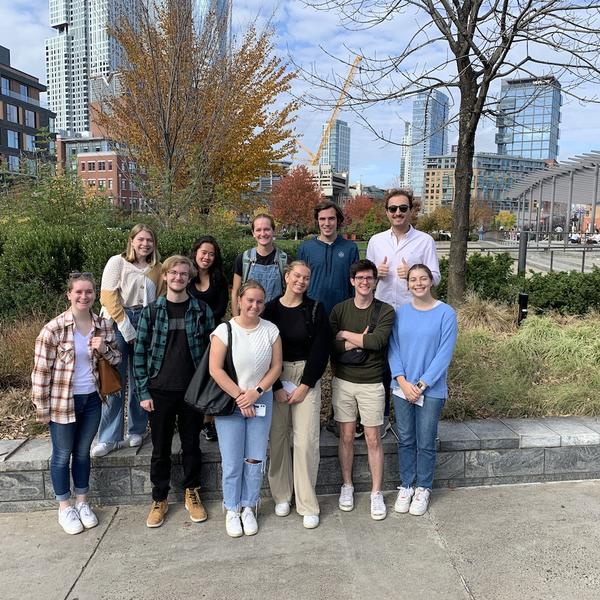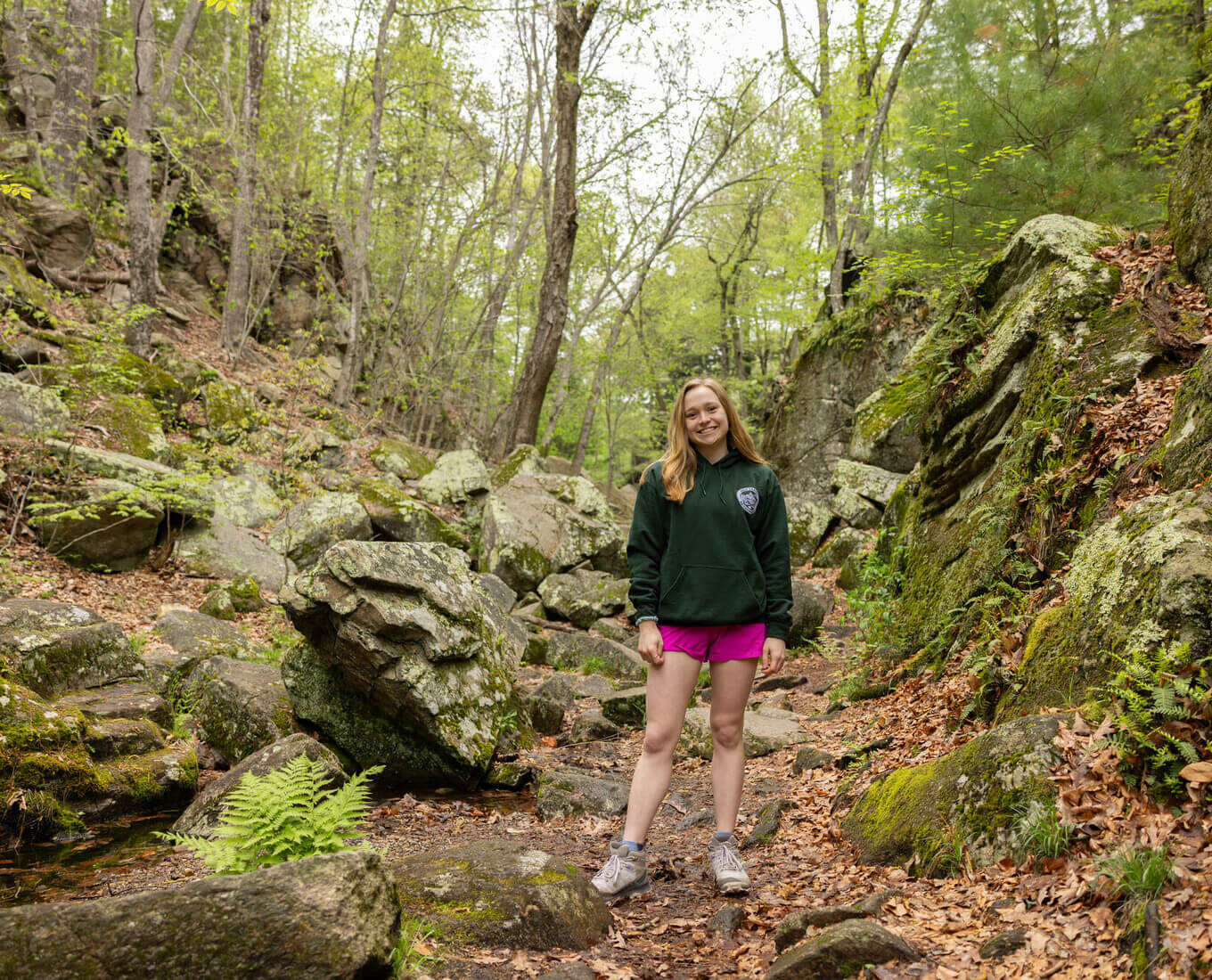Boston’s Rose Fitzgerald Kennedy Greenway is a bustling 17-acre public park and green space, home to food trucks, fountains and even a carousel. But during the second half of the 20th century, that same space hosted one of the most congested elevated highways in the U.S. — the Central Artery. A century prior to that, the area was home to a candy factory, fruit markets and grocers, a Black barbershop, and more.
College of the Holy Cross students enrolled in its Making the Modern City course could see all of those iterations at once, thanks to a Boston Public Library tool called Atlascope and Amy Finstein, assistant professor of visual arts. With a click of their cursor, students could walk the streets and travel through decades, watching the area change.
"Any landscape, particularly in our day-to-day lives, we take at face value. For my students, I want them to question what they see and wonder what was there before and how it evolved to the place that it is now," said Finstein, who has special expertise on the Central Artery as author of her 2020 book, "Modern Mobility Aloft: Elevated Highways, Architecture and Urban Change in Pre-Interstate America."
Atlascope is an online collection of historical urban atlases that enables researchers to explore how spaces have changed over time by overlaying different maps on top of one another. Finstein’s students were each assigned a parcel of land in the Greenway to investigate via the atlases as their final project for Making the Modern City, which explores patterns of urban change.
"When anybody looks at the Greenway today, for example, you see this really interesting urban park with public art and all kinds of activities. But not everyone knows that this landscape was not always there," said Finstein, who also serves as urban studies advisor and architectural studies co-advisor. "And this particular park becomes a great opportunity for engaging the material I am teaching in the classroom over the course of the semester: technological changes and societal changes that really impacted urban areas, like indoor plumbing, fire safety and transportation, from railroads to the automobile. This corridor of land used to hold buildings, streets, businesses and people’s livelihoods."
The course, which Finstein has taught since 2018, enrolls 25 students across the majors of environmental studies, architectural studies, urban studies and visual arts. She partnered with the Leventhal Map and Education Center of the Boston Public Library to use Atlascope, and the center showcased the students’ research in two posts one and two on its blog.
Garrett Dash Nelson, president and head curator of the Leventhal Center, visited Finstein’s class to talk about how to research using historic maps.
"The millions of names, buildings and features on urban atlases are an invitation into a world of historical research about the changing spaces around us," Nelson said. "Professor Finstein's students using our interactive Atlascope portal is an example of the public digital humanities at their best: scholars, students, libraries and the public learning together using century-old documents and up-to-the-minute technologies."
Finstein’s students created websites about each of their parcels, showcased on the Making the Modern City website, with support from Holy Cross ITS. Starting with Atlascope and the maps, students researched the history of their section of the Greenway in primary source materials, such as census records, newspaper articles and photographs, wills and trusts, with assistance from the Holy Cross Libraries staff.
Using Atlascope gave the students access to a wealth of online resources that had not previously been collected and presented together.
"Engaging many different maps and atlases for many pieces of land and 25 students would be very complicated if limited to the hard copies. What’s been amazing about what the map center has done is that they have digitized and stitched together all these different pages from historic atlases that otherwise don’t exist in contiguous form," Finstein said. "It is one big map layered on top of another. I can’t underscore enough what a game-changer this is for urban research."
Elyse Cote '23 took Making the Modern City in spring 2021, a decision that helped her realize she wanted to pursue a career in urban planning. After graduation, she’ll spend the summer as an intern at Gamble Associates, an architecture firm in Cambridge, Massachusetts, and will also study urban planning and design at Harvard Graduate School of Design’s Design Discovery program. This fall, she'll head to the University of Michigan to study urban planning and urban design.
A double major in environmental studies and architectural studies, Cote investigated an area of the Greenway that was previously full of wooden market buildings that were destroyed by fire multiple times. What she learned in this course will be helpful to her in graduate school and beyond, she says.
"The primary source research is a skill that really sets you apart, plus learning how to have strong writing and communication skills," she said. "When I think of urban planners, I think of community engagement meetings, town hall meetings or project proposals. You need to be able to communicate about your work and why it is important. At the end of creating our website, we wrote letters to the head of the Leventhal Map Center at the Boston Public Library, advocating for why our websites and storytelling were important enough to be published."
Finstein is currently researching Worcester maps and atlases in the hopes that she can eventually undertake a similar project about the city, specifically the path of Interstate 290 including — but not limited to — the area close to the College.
"What was exciting about this to me is that it was a landscape that I knew was going to surprise people, when they understood that it wasn’t always the way it was," Finstein said. "Thinking about what I try to do in this class and in all of my teaching, it’s to empower students to wonder about something and to figure out its particular story, and then contextualize that within large patterns of architectural and urban change — to not take everything that we see today at face value of having always been that way."
Using Century-Old Documents to Research Boston's Landscape

Using an online collection of historical urban atlases, the student researchers explored how the urban spaces changed over time.
Read Time
5 Minutes


